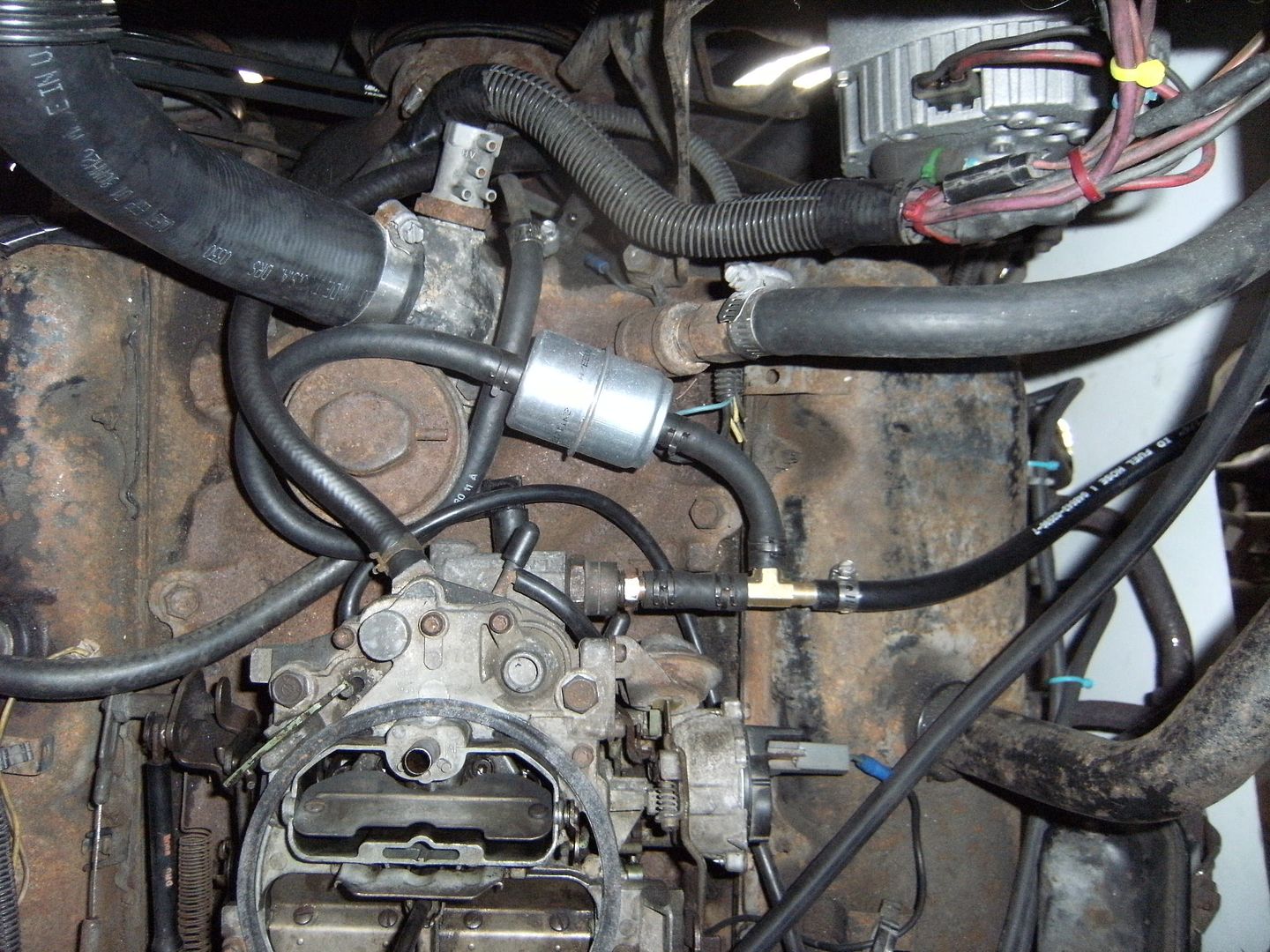Go to...  | Start A New Topic  | Search  | Notify  | Tools  | Reply To This Topic  |  |
Deleted | |||
|
Official Barth Junkie |
I'm assuming you mean when it's running? Not necessarily a problem. The products of hydrocarbon (fuel) combustion (combining with oxygen) are hydrogen oxide (water! usually in the form of vapor) and carbon oxides (mono and di) There are also small amounts of acid products from sulfur and nitrogen oxides. On vehicles with long tail pipes the water often condenses in the long cool exhaust pipe and drips out (or forms puddles inside the muffler.) This is one of the reasons it is good to start and run at operating temp for a while now and then to get the oil warmed up to get rid of condensation in the oil. A full warmup will also heat the entire exhaust and cook off the condensate inside. Stop and go vehicles that never get fully warmed up often have very short lives for both engines and exhaust systems, due to water contamination in the oil and acidic water in the exhaust. In your case, get the engine and exhaust system good and hot (take it for a drive) I'm betting you won't see that water anymore. If it is still dripping let us know! (I suspect the other side has water in it that isn't running out, ie collecting in a low spot in the pipe.) It is possible to get coolant into the exhaust if the head is cracked or head gasket is bad, but the glycol in the coolant will smoke white and has a distinct odor. If the engine wasn't overheated (or frozen) this is rare. 9708-M0037-37MM-01 "98" Monarch 37 Spartan MM, 6 spd Allison Cummins 8.3 325+ hp | |||
|
Deleted | ||||
|
Official Barth Junkie |
10 minutes is probably not enough to cook off the pipes completely. (Grab the tailpipe... if it isn't good and hot, drive some more.) Good luck! 9708-M0037-37MM-01 "98" Monarch 37 Spartan MM, 6 spd Allison Cummins 8.3 325+ hp | |||
|
 3/19 3/19 |
May be a GOOD sign. The combustion in more modern autos is so efficient, with computers always measuring and adjusting, that water byproduct dripping from tailpipe can seem alarmingly profuse. | |||
|
Official Barth Junkie |
Not sure what the truck guy sees. The Tstat housing is top front center. Maybe an alternator bracket or ground lug on one bolt but no big deal. Here's mine after the smog stuff was gone, before the fuel injection.  9708-M0037-37MM-01 "98" Monarch 37 Spartan MM, 6 spd Allison Cummins 8.3 325+ hp | |||
|
 3/19 3/19 |
No, hope it does NOT stop exhaling water vapor and drooling. If you look at the back of your car (assuming it is late model and running well) you will probably see the same thing. Replace the thermostat why? Maybe I am missing something. | |||
|
Official Barth Junkie |
You may have AC brackets in the way but I can't see 2 hours. I'll look for older pics with all the original junk Here's one with EGR still there (ignore the controversial rubber fuel lines!)  9708-M0037-37MM-01 "98" Monarch 37 Spartan MM, 6 spd Allison Cummins 8.3 325+ hp | |||
|
Captain Doom |
They would charge for the time required to drain, refill, and bleed the cooling system. That done, it's a 15-20 minute job. It's also a good idea to replace the radiator hoses, especially the lower. Rusty '94 28' Breakaway: MilSpec AMG 6.5L TD 230HP Nelson and Chester, not-spoiled Golden Retrievers Sometimes I think we're alone in the universe, and sometimes I think we're not. In either case the idea is quite staggering. - Arthur C. Clarke It was a woman who drove me to drink, and I've been searching thirty years to find her and thank her - W. C. Fields | |||
|
 3/19 3/19 |
Now THAT makes sense to me. | |||
|
Official Barth Junkie |
The round thing is the EGR valve. Stands for Exhaust Gas Recirculation. Basically it is a valve that allows exhaust gas to be redirected into the intake stream. EGR was an emissions thing. At high enough temperatures in the cylinder, normally stable nitrogen can become reactive and form nitrogen oxides, which then convert to acids in the environment. (referred to as NOx in pollution speak) If small amounts of (oxygen depleted) exhaust gas are mixed with the fuel air mixture, the peak temperatures were reduced and NOx emissions went down. The EGR valve opens when it gets a vacuum source from one of the ported taps on the carb. There is also a temperature valve in the line. (the thing on the thermostat with the 4 stumps) When it is working the EGR does reduce NOx but by now most of the valves are long since stuck, the temp valve doesn't open and the vacuum lines leak and cause problems. You can disconnect the EGR (probably not working anyway) and never know it. Prevent vacuum leaks, etc. I went so far as to remove mine and put a flat plate over the openings. (Gets it out of the way) I also unscrewed the temp valve from the thermo housing and put in a plug. Check your PMs... 9708-M0037-37MM-01 "98" Monarch 37 Spartan MM, 6 spd Allison Cummins 8.3 325+ hp | |||
|
| Powered by Social Strata |
| Please Wait. Your request is being processed... |
|
This website is dedicated to the Barth Custom Coach, their owners and those who admire this American made, quality crafted, motor coach.
We are committed to the history, preservation and restoration of the Barth Custom Coach.
We are committed to the history, preservation and restoration of the Barth Custom Coach.

